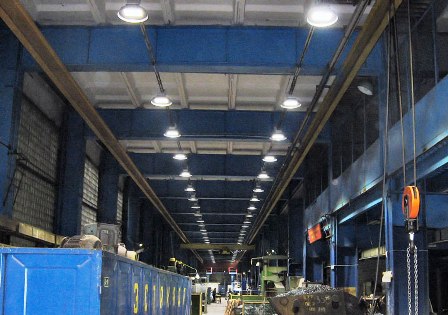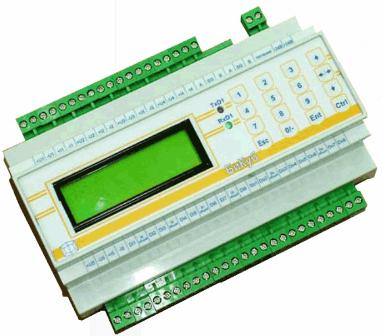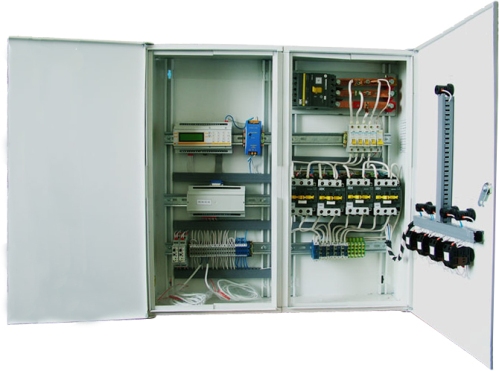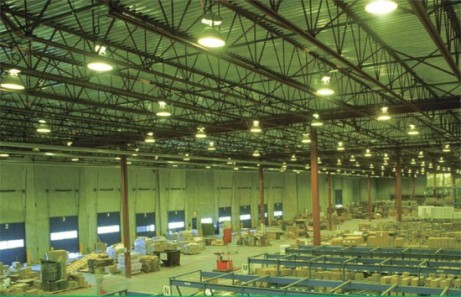Modern lighting control devices
In large enterprises, in workshops, in administrative multi-storey buildings, etc., the cost of paying electricity bills is sometimes very significant. The most active owners have already replaced incandescent lamps and even gas-discharge lamps with LED ones, and this approach undoubtedly leads to a reduction in energy costs, although the cost of retrofitting itself turns out to be significant. As a result, it turns out that it is necessary to initially approach the solution of the problem of economical lighting more competently and from several sides. One of the most modern ways to save energy will be discussed in this article.

In order for the lighting to be economical, so that the lamps do not burn in vain and do not suck extra money from the budget of the enterprise, you need to make sure that the lighting is turned on where it is needed and when it is needed.For this, modern lighting control systems are used, systems that differ in tactics and strategies for turning on lamps according to a predetermined schedule, according to a program preconfigured on a computer.
Such control will add flexibility, lighting fixtures will be turned on with an accuracy of seconds, according to a schedule and according to the state of sensors, for example, street or indoor light level sensors. As dusk falls, the outdoor lights will turn on and when dawn comes, they will automatically turn off.
The same applies to long corridors and passages between parts of buildings, between workshops of a large enterprise: the part of the corridor where people walk will be brightly lit, and the rest of the corridor will remain covered in darkness or will only be dimly lit from the dim light of the emergency lighting.
You can go even further in energy saving. To turn on the light in a separate building of the building, at a time when the lighting fixtures should not be turned on according to the schedule, the staff must have permission, otherwise the building will remain unlit.

Computerized lighting control systems are the most effective today, for example, systems based on Bikub — MT02 controllers from the Novosibirsk company Bikub. We will look at the Bikub - MT02 controller as an example.
This controller can manage up to 8 lighting lines, for this there is a built-in microcontroller whose software can be easily configured by the user, that is, the schedule for turning on and off each of the lines is set, the corresponding days of the week, the time of turning on and off , the state of the states of the individual inputs (signal from the light sensor or from the presence sensor, for example) at the time of execution of the command — i.e. the schedule is very precisely and detailed configured.
For the sake of fairness, we note that not only lighting, but also various mechanisms that are not related to light can be turned on on a schedule thanks to this controller, for example, a ventilation system in the room before the start of work day, or heaters.
The controller itself works as follows. According to the diagram, it supplies voltage from its outputs to external devices that can be located in distribution boards. The control signal has a voltage of 24 volts, which is sufficient to turn on a powerful relay or an external contactor.
Each of the 8 lines is controlled independently and can have its own schedule and operating conditions. 8 corresponding inputs are intended for interrogating external sensors in order to then, in accordance with the program, execute one or another command, to turn on one or another external device, for example one of the lighting lines, according to the schedule. This is how lighting management and control systems and complex equipment management systems of an enterprise or building are formed.

On top of the meringue of such controllers, lighting control cabinets are designed and assembled, which are controlled by the dispatch computer using the installed and configured software, in which the schedule, the conditions for the execution of the work are specified (in accordance with the state of sensors connected to the inputs) , modes are set for each line. lighting work (and other equipment).
In addition to the control function, the program stores a record of the report on the operation of the system. Of course, with the help of a computer, you can manually turn off or on any of the lines at any time, that is, flexibly, in real time, control the lighting of a building or enterprise.
For example, a schedule is set for turning on the lights in this part of the building or in this workshop, where on that day people will work from noon to evening or until dusk, and in another workshop work will be in full swing from midnight to morning, so that for the second workshop the schedule will be one, for the first - another, etc. That is, it is possible to configure each of the lines strictly individually.
The most modern controllers can work without the participation of a computer — only from the keyboard on the front panel of the controller itself the schedule and modes of operation of the lines are set. The adjustment algorithm is described in the instructions for the controller, which the manufacturer must provide. The liquid crystal display supports the programming process.
Each of the inputs is assigned as a signal source for the control algorithm of one or another output, one or another lighting line, that is, the sensors connected to different inputs can be functionally connected to different outputs of the controller and will be interrogated in accordance with a given program that will perform the relevant tasks according to the defined schedule and algorithm, for example, the sensor can control the line by priority over the schedule.
In the conditions of controllers working without a dispatch computer, a number of automation functions are unavailable, and data entry takes more time and is more difficult, especially if the enterprise has many cabinets with these controllers, so it is best to have the program controlled by a computer , which is more flexibly configured, but just as accurate as programming from the instrument's keyboard.

Computer control allows you to automatically generate reports on energy consumption, at any time you can quickly change the algorithm or urgently change the operation mode of the line, and you do not need to run to the cabinets to manually perform all the necessary manipulations.
Using modern lighting control devices allows businesses to save a lot.
For example, one of the factories in Siberia, which installed more than a dozen lighting control cabinets, the distance between which was about a kilometer, was able to save up to 45% of energy costs, thanks to the intelligent management of a lighting system of almost half a thousand industrial lamps. which have a total capacity of a quarter of a megawatt. …
Previously, the company was incurring significant costs because the lamps were running around the clock and throughout the plant. After the installation of lighting control cabinets based on Bikub-MT02 throughout the plant, the lamps began to turn on strictly according to the schedule, in addition, according to presence sensors. The benefits are obvious.
